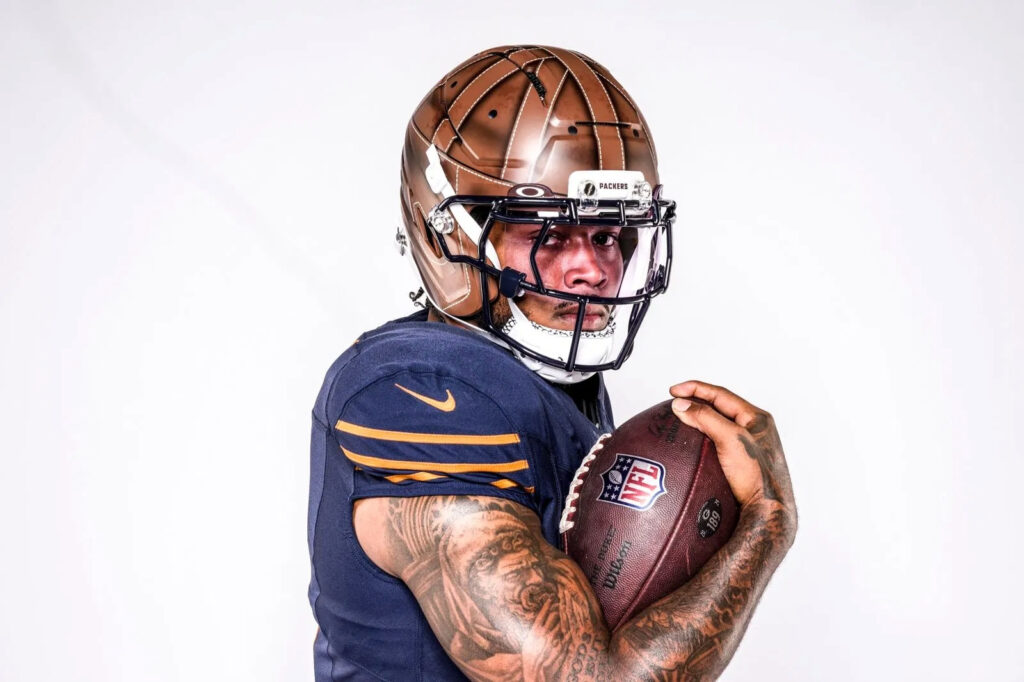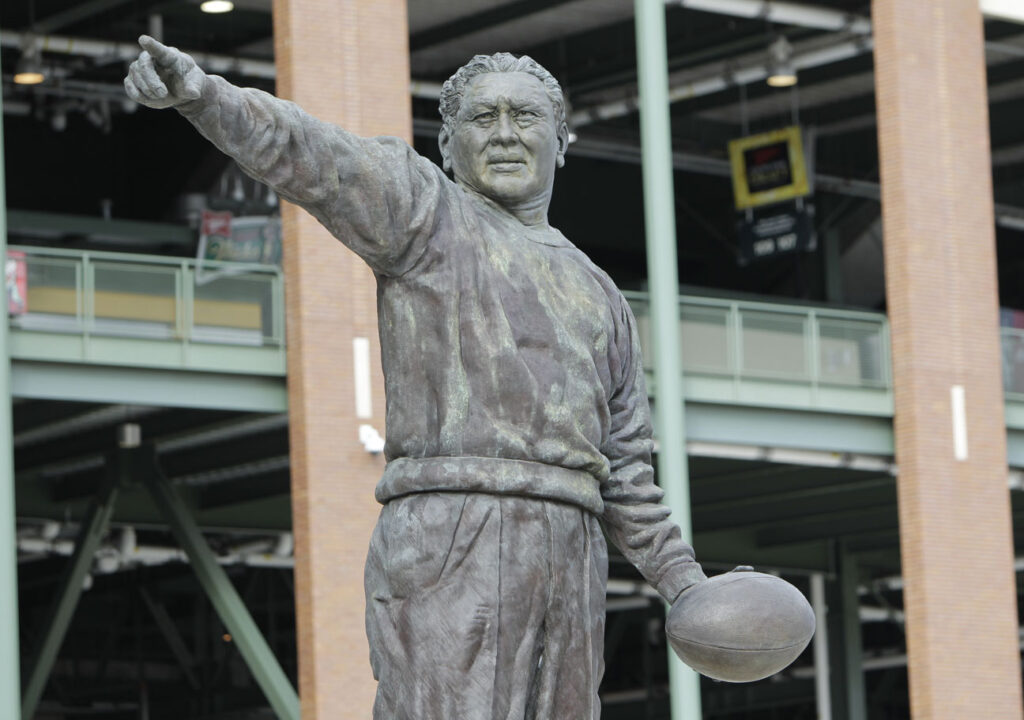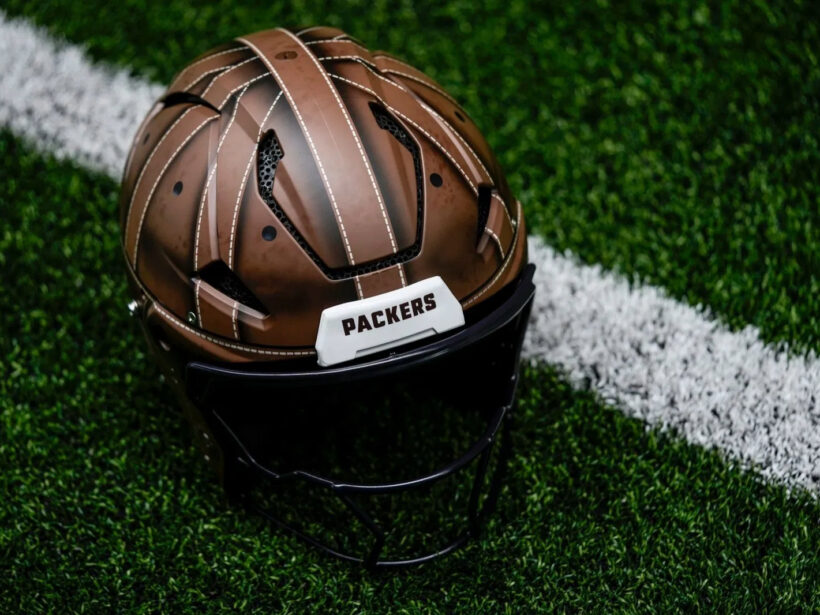This past week, the Green Bay Packers unveiled brand new alternates for the 2025-2026 NFL season, to be worn in a yet to be decided home game.
The uniforms carry with them a history rich with tenacity, and if this year’s team can tap into it, it could propel them the top.
New Digs
Following a precedent that was set in 2010, the Packers new alternates harken back to their history, and this time, we’re headed to 1923.

Starting with the jerseys, these Packers classics feature the team’s original colors, navy blue and gold.
The navy blue base is complemented by golden accents, including the numbers and stripes on the shoulders, and there are golden pants to match.
In the past, there had been some confusion as to whether or not those colors were swapped, but based on new evidence from both historical photography experts and descriptions in the 1923 Green Bay Press Gazette, this new interpretation appears to be an accurate depiction.
The real attraction however, is the helmets.
The new alternates feature individually hand-painted lids to mimic the leather worn in the NFL’s early days, and they are incredibly detailed, appearing to follow in the footsteps of a look that was debuted at the NCAA level by the Illinois Fighting Illini last year.
Eagle-eyed fans may also recognize the framework from one of the Packers’ original alternates, worn in 2010 and 2011, which were based on the team’s 1929 uniforms; and while the design is similar, the 2025 refresh is certainly more appealing.
Old Memories
So, why 1923?
The Green Bay Packers organization may have only been entering it’s fifth season at the time, but it was also at a turning point.
Following the 1922 season, the team was in debt and struggling to make ends meet. As a last ditch effort, boosters in and around Green Bay created the Green Bay Football Corporation, and subsequently, held the team’s first official stock sale in 1923, becoming publicly owned by just over 200 fans.
According to team historian Cliff Christl, the Packers wouldn’t have held on without it.
“…the 1923 stock sale raised $5,000 to keep the team afloat.” Christl told Rob Demovsky of ESPN when the uniforms were revealed. “If that had not occurred, there’s no way the Green Bay Packers would be here today…they could [not] have survived all the roadblocks and near-death experiences [that] the team had for years.”
Following their near-escape from becoming defunct, the 1923 Packers went on to boast a 7-2-1 record, which was third-best in the NFL. Six seasons later, in 1929, they’d win their first championship, then become the first team to three-peat, with two more titles in 1930 and 1931, before the playoff system was in place.
Now, over a hundred years later, the team has over 500,000 proud shareholders, creating a basis for one of the most unique professional markets in sports. As of 2025, Green Bay remains the only organization to operate this way.
Familiar Faces
Although the Packers were in their infancy when the templates for the new alternates were worn, several members of the team who dawned them are still honored by Green Bay today.
The 1923 squad featured four Packers Hall of Famers, including guard Howard “Whitey” Woodin, who was inducted in 1973, center Francis “Jug” Earp, who was inducted in 1970, tackle Howard “Cub” Buck, who was inducted in 1977, and the most notable of them all, player-coach Earl “Curly” Lambeau.

Lambeau, who co-founded the Packers in 1919, was inducted into the Green Bay Packers Hall of Fame in 1970, following his earlier enshrinement in the Pro Football Hall of Fame in Canton, Ohio in 1963.
Lambeau Field itself is his namesake, and his fingerprints are all over what the league has become today.
A Modern Chapter
Adorned with fresh threads that honor the franchise’s storied history, the 2025 Packers can only hope to achieve a similar level of success to their 1929 counterparts.
Many members of Green Bay’s young core seem to have reached a new level of confidence this off-season, if their training camp interviews are anything to go by, and it could lead to a massive leap.
“We’re doing it for the people that wore the ‘G’ before the ‘G.’” Defensive end Rashan Gary enthused when the the Packers social media team let players see the new leather-inspired helmets for the first time.
This season, specters of champions past will take to the gridiron with them.

